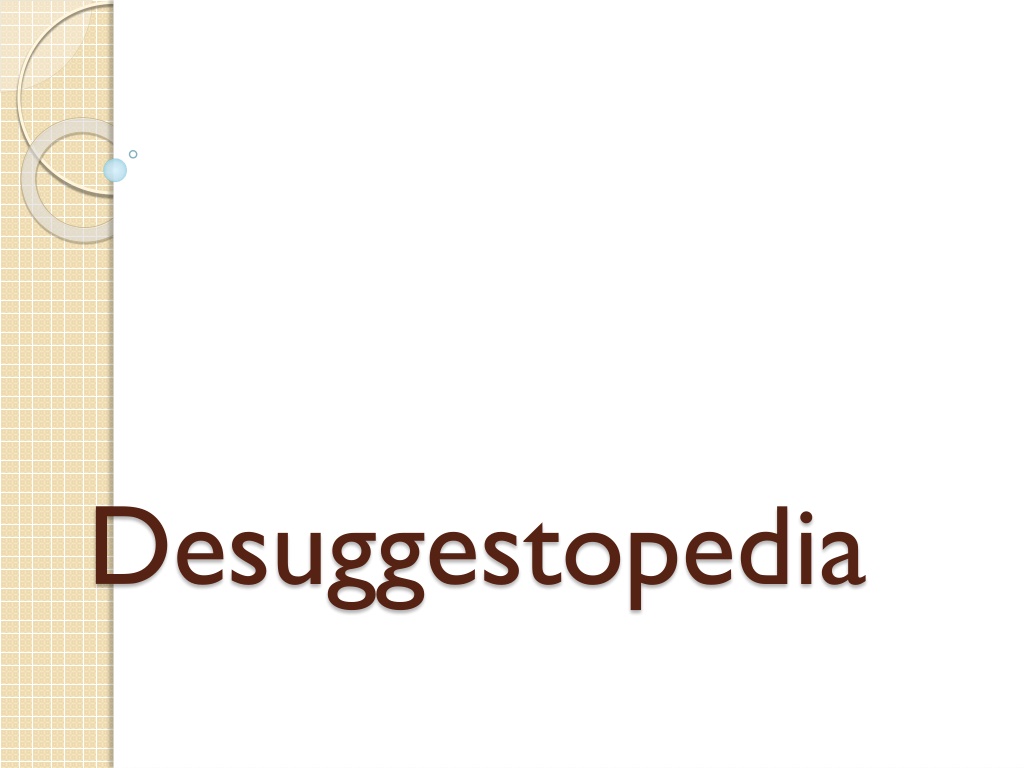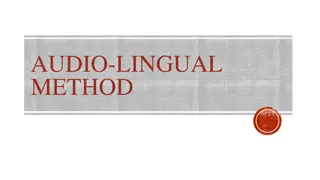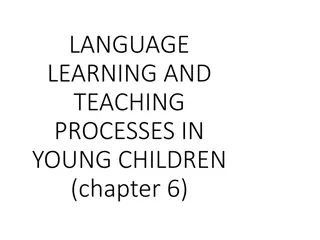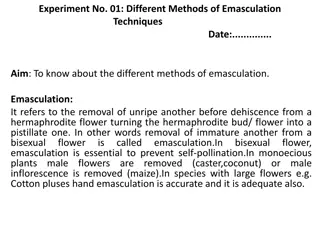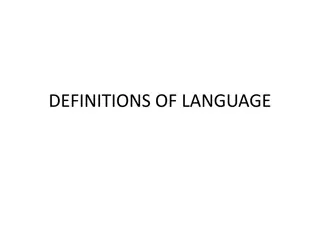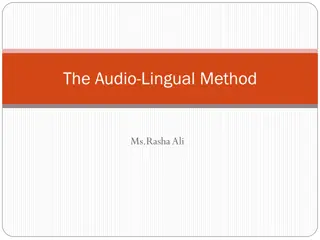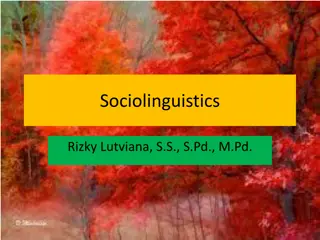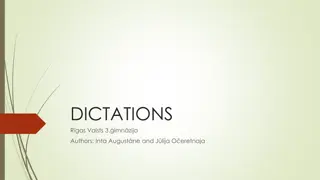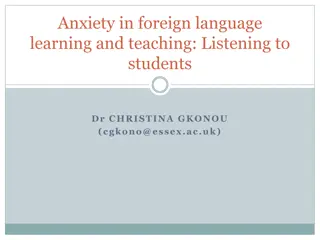Engaging Language Learning with Desuggestopedia Method
Explore the innovative Desuggestopedia language learning method where classes are vibrant and interactive. Students engage in dialogue readings, role-plays, games, and songs to enhance language acquisition. Experience a unique approach to language education that focuses on building confidence and fluency through creative and dynamic activities.
Download Presentation

Please find below an Image/Link to download the presentation.
The content on the website is provided AS IS for your information and personal use only. It may not be sold, licensed, or shared on other websites without obtaining consent from the author.If you encounter any issues during the download, it is possible that the publisher has removed the file from their server.
You are allowed to download the files provided on this website for personal or commercial use, subject to the condition that they are used lawfully. All files are the property of their respective owners.
The content on the website is provided AS IS for your information and personal use only. It may not be sold, licensed, or shared on other websites without obtaining consent from the author.
E N D
Presentation Transcript
The class meets for two hours, three mornings a week Bright , colourful ( paintings and posters ) classroom ( Peripheral Learning ) First Meeting Teacher greeting and introduction in students native language ( to make them feel safe and confident ) New Identity
Presenting the dialogue 1.distributing the scripts in two languages 2. teacher briefly mentions a few points about the dialogue story, grammar and vocabulary in native language,target language or pantomime 3. First reading ( accompaniment and dramatization ) 4. Second reading ( normal speed with different music ) slowly with music
5. The students stand and repeat after the teacher, joining their voices to the music and dramatize the dialogue 6.Taking a break 7. Third reading ( accompaniment , the students listen without their scripts ) 8.Homework :reading the dialogue once before going to bed and once when getting up in the morning normal speed, music
Second Class Role play : dividing students into groups, playing roles from the dialogue, each group reads the dialogue in a different mode ( angrily, cheerfully, sadly, etc ) Teacher asks questions about the dialogue in the target language, asking students to translate from and language into the target
Singing a song Playing wh-questions games about the new identity by using a medium-sized soft ball No Homework other than reading the dialogue Third class : working more with the same dialogue ( more games, role-play, asking questions and repetition )
Creative Adaptation The students designed to help them learn the new material and use it spontaneously through singing, dramatization and games.The important things is that the activities are varied and do not allow students to focus on the form of the linguistic message, just the communicative function. engage in various activities
Comment Choosing a new identity This enhances students feelings of security and allows them to be more open.
Principles Teacher s Goals : 1. To accelerate the process of foreign language learning for everyday communication 2. To desuggest learners psychological barriers
2. Teachers / Students Roles The teacher s roles : Source of authority being confident and trustable Source of security affording a cheerful classroom atmosphere The students roles : Relaxed : following the teacher s instructions Role-play : enjoying the new identity and perform the dialogue
3. Characteristics of the teaching/learning process Classroom atmosphere New Identity Teaching the dialogue 1. Receptive phase ( Active & Passive concerts ) 2. Active phase
4. Interaction The teacher initiates interaction ( Teacher Students ) Students can respond to teacher nonverbally or with little target language until they achieve progress ( Students Teacher ) Students interact with each other through role-play and games ( Student Student )
5. Students Feelings Relaxed : Students psychological barriers are desuggested Confident : 1. the target language comes naturally 2. Success is obtainable Secure : new identity and native language Teacher achieves this through 1. Direct positive suggestion 2. Indirect positive suggestion
6. Language / Culture Communication is achieved through two levels : Language affecting the interpretation like nonverbal behaviour. Culture that is taught concerns the everyday life of the target language native speakers. It should be presented to students through fine arts, mainly painting. and linguistic some factors message
7. Language Components / Skills Vocabulary is emphasized. Grammar is taught explicitly but minimally, to a limited extent, since the focus should be on communication and not the language form. Speaking communicatively is important. Reading is done ( reading the dialogue or passage ) Writing is also taught ( students write imaginative compositions )
8. Role of the Native Language Translation to the native language is one of the ways the teacher resorts to to make meaning clear The native language is also used by the teacher in explanations and giving instructions. As the course proceeds, using the native language would become less and less.
9. Evaluation No formal test is made since this would make learners uncomfortable. Evaluation is conducted during normal in class performance.
10. Error Correction Errors are corrected by the teacher gently and with soft voice.
Advantages It emphasizes learners feelings and works on creating a cheerful and comfortable environment for them. Teacher has authority, which gives learners a sense of security( students remember best and are most influenced by information coming from an authoratative source, teachers) It emphasizes that learning happens on two planes : conscious ( direct ) and subconscious ( indirect )
Advantages It encourages learners to look for more sources other than the teacher to learn the language ( peripheral learning ). It motivates learners to use the target language independently, take more responsibility and be more confident ( through the technique of new identity and creative adaptation ) Errors are corrected gently and indirectly
Disadvantages It is not suitable for large classes Decorating the classroom with paintings and posters that should be changed regularly can be expensive for some teachers Not all learners may find music a source of relaxation No tests are used to evaluate learners progress
